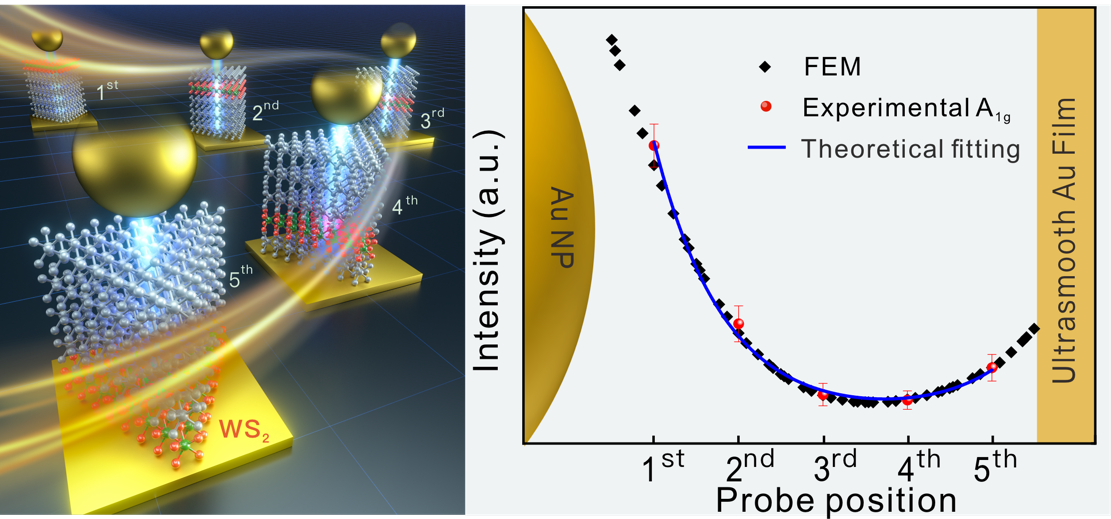According to a study published June 19th, 2022, in the Journal of the American Chemical Society, a team of researchers engaged in surface-enhanced Raman spectroscopy (SERS) has developed a nanoruler that shines a light on the longitudinal plasmonic fields in nanocavities.
 The left shows the different position of monolayer, WS2 in the Nanocavity. The right presents distribution of plasmonic field intensity. Image Credit: Siyu Chen.
The left shows the different position of monolayer, WS2 in the Nanocavity. The right presents distribution of plasmonic field intensity. Image Credit: Siyu Chen.
SERS is a very effective and sensitive spectrum analysis method that can be used in a variety of disciplines. SERS generates a substantially amplified Raman signal of up to 1010–15, allowing the investigation of single molecules, in contrast to weak Raman scattering.
How we develop the technology depends, to a large extent, on what we know about plasmonic fields. In the experiments, we observed an uneven distribution in plasmonic field at nano-scale. But it lacks theoretic and experimental support. So we decided to figure it out.
Liangbao Yang, Department of Pharmacy, Hefei Institutes of Physical Science, Chinese Academy of Science
Recalling the study’s inception, Yang and his colleagues had to devise a method for plasmonic field research.
Yang added, “Powerful tools are needed. So we designed and fabricated the nanoruler to look into it in high spatial resolution.”
A plasmonic nanocavity was created by mixing ultra-smooth gold films and single gold nanoparticles to build a novel nano-ruler with a spatial resolution of roughly 7 × 10–10 m.
They also created the spacer layer, a unique and ground-breaking five-layer two-dimensional atomic crystal wherein they inserted a monolayer of WS2 as the A SERS probe and the remaining four layers of WS2 as reference layers.
This unique design produced a strong enough quantitative SERS intensity to directly and quantitatively determine the distribution of the longitudinal plasmonic field.
In addition to manufacturing and direct testing, the researchers used theoretical derivations, computations, and spectral measurements to support and validate their findings. Their findings demonstrate the uneven distribution of the longitudinal plasmonic field within a single nanocavity and the unexpectedly considerable gradient in intensity.
The fabrication provides a new way in which to analyze the plasmonic field in nanocavity and offers a new way of understanding plasmonics and SERS technology.
Journal Reference:
Chen, S., et al. (2022) Insight into the Heterogeneity of Longitudinal Plasmonic Field in a Nanocavity Using an Intercalated Two-Dimensional Atomic Crystal Probe with a ∼7 Å Resolution. Journal of the American Chemical Society. doi:10.1021/jacs.2c03081.
Source: https://english.cas.cn/